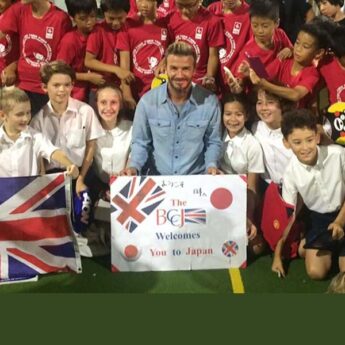OOCL Logistics describes why internal resources are important
In this increasingly global economy, flexibility and highly trained staff are significant drivers of development.
I strongly believe that having management and staff with integrity is imperative for sustainable growth, as maintaining quality is crucial for firms undergoing expansion.
Looking to ASEAN
Though most of our business still comes from China, we are expecting much more growth in South-East Asian countries. Our clients, especially Japanese firms, tend to view overreliance on China as a risk factor in their value chain composition.
For many of these firms, success in China is easier said than done, and few Japanese firms boast real success stories in that market.
Most businesses acknowledge that the market potential of China is huge, but people are now coming to realise that cultural, political and economic gaps are still quite significant between Japan and China.
Though China’s gross domestic product (GDP) already exceeds that of Japan, its GDP per capita is still miles behind.
Further, understanding the real needs of developing countries, especially in the retail and service industries, can be challenging for corporations in Japan.
Until now, China has remained the primary sourcing centre for Japanese manufacturers, but those same firms are now looking to disperse the risk that accompanies reliance on China as a sole manufacturing base.
That is one of the reasons that the focus is shifting to South-East Asian countries. Geographic distance and economic disparities may be wide, but people in these nations are said to regard Japanese culture positively.
Strength from within
Though we are a Japanese firm, our customer portfolio is quite diverse and almost half our clients have their headquarters abroad. Our employees come from many different nations and speak a variety of languages. This is just one of our strengths.
On top of our multicultural environment and ability to communicate, we take pride in our scientific approach to establishing operational processes.
We use the Lean Six Sigma module with Key Performance Indicator control. We hire supply-chain/logistics engineers who have been educated overseas or who have experience in consulting.
Another of our strengths is IT capability. We develop our own IT applications, such as the proprietary Global Supply Chain Visibility system. Because we don’t need to invest heavily in technology, we can offer much lower prices than those of our competitors.
Of all these factors, however, we consider our genuine client-based approach the most important. We are flexible and can make adjustments for each customer’s requirements, thereby providing tailor-made solutions.
Thus, if clients require third-party software for warehouse management or other purposes, we can assign staff who are dedicated to the creation and implementation of such systems.
We can provide these services thanks to the vast project management experience of our team members.
Value-added services
Recently, many of our Japanese clients have been looking to expand in China, South Korea, Taiwan, Hong Kong and other South-East Asian countries. It is because we have offices in all these locations, moreover, that we have received numerous enquiries from potential customers.
In such cases, logistics providers generally only show interested clients their existing offices or operational bases, but our approach is different. We start with an industry analysis.
We might use an Advantage Matrix or do a value-chain comparison. This may sound like things a consulting firm would do, rather than a third-party logistics (3PL) firm like us.
However, because we recruit people from consulting firms and educate them on the operational side, given the current Japanese logistics market, our staff can offer an amalgamation of problem-solving and value-added skills that vastly differentiate us from both consulting firms and ordinary 3PL providers.
Overdose of quality?
Industry professionals often speak of a paradox concerning Japanese firms, in that the average level of service they provide is too high, especially compared to competitors in ASEAN nations.
Doing too much entails not only extra cost but also, and more importantly, such services are often not required by non-Japanese customers.
Some classic examples of this are when garment firms do needle checks, or firms require delivery numbers and time slots for trucked shipments.
On the flip side, Japanese firms that establish branches in foreign markets cannot enjoy the same level of service abroad that they are accustomed to receiving at home.
These common hurdles are often seen as obstacles to obtaining economies of scale in an operation.
Globalisation vs. localisation
For a while now, multinational corporations everywhere have been facing the challenge of globalisation versus localisation, and are trying to find the right balance to become even larger, transnational firms.
Some people say the world is flat and use that as their guiding principle. But I subscribe to Pankaj Ghemawat’s semi-globalisation concept, which maintains that distance still matters.
According to his theory, CAGE [Cultural, Administrative, Geographic and Economic] differences still represent obstacles for multinational corporations, but firms can leverage these differences using arbitrage. This applies to both our clients and our own firm.





